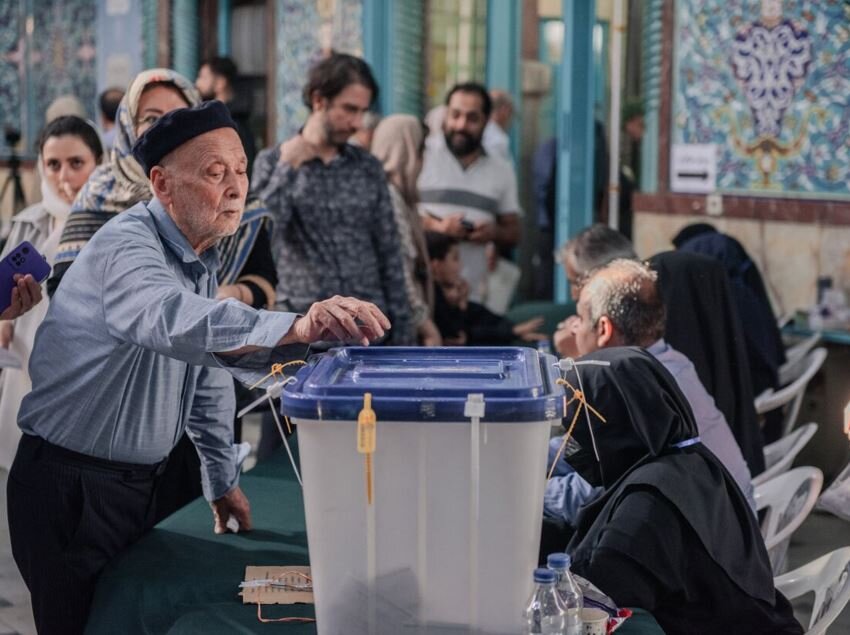Transition period like never before

TEHRAN – The past 50 days have been a remarkable period for Iran, marked by significant challenges and triumphant successes.
The nation faced an unexpected and tragic event with the death of President Ebrahim Raisi in a helicopter crash on May 19. This profound shock to the country was met with resilience and effective management, culminating in a complex yet smoothly executed electoral process that maintained public satisfaction.
The tragedy of May 19
On May 19, Iran was plunged into mourning with the sudden and tragic loss of President Raisi in a helicopter crash. Raisi was a prominent and influential political figure who had played a crucial role in navigating Iran through numerous domestic and international challenges. His untimely death left a leadership vacuum and raised significant concerns about the stability and future direction of the country's governance and policies.
The electoral challenge
In the wake of President Raisi’s death, Iran faced the daunting task of organizing a snap presidential election.
Under Articles 131 and 132 of the Iranian Constitution, a new president should be elected by public votes within a maximum of 50 days from the day when a president dies or is incapacitated.
Under normal circumstances, elections are intricate, requiring meticulous planning and coordination. The sudden need to fill the presidential seat added an urgency to the situation, necessitating swift action to ensure the continuity of leadership.
The first round of the election required the rapid mobilization of resources and effective communication with the public. Authorities had to ensure that all logistical elements were in place, from polling stations to ballot papers, within a limited timeframe. Building and maintaining public trust was crucial, and the government needed to assure citizens of the transparency and fairness of the electoral process.
Out of the 4 candidates that made it to the final June 28 election, pro-reform Masoud Pezeshkian and principalist Saeed Jalili secured the highest votes and went to a runoff.
The second round of the election introduced additional complexities. This phase involved real-time problem-solving and adaptive strategies to respond to any unforeseen challenges. Election authorities worked diligently to ensure every vote was counted accurately and that the process remained free from any irregularities.
Finally, the runoff election on July 5 revealed Pezeshkian’s victory with 53.6% of votes.
Pezeshkian's victory marked the end of an intense electoral process and positioned him as Iran’s 9th president. The voter turnout was reported to be 49.8%, which showed an increase in comparison to the first round and showcased the rise in nation’s determination to participate in the electoral process.
Public satisfaction and international recognition
Despite the inherent challenges, Iran’s handling of the election process was exemplary. The country managed to satisfy all involved parties, including political candidates and the general populace. The smooth execution of both rounds of elections, without major problems or issues, stands as a testament to the country’s resilience and administrative efficiency.
The successful management of the elections garnered both domestic and international recognition. Observers noted the calm and orderly manner in which the elections were conducted, reflecting Iran’s commitment to upholding democratic principles even amidst adversity. Public satisfaction with the process further underscored the government’s success in effectively addressing the crisis.
Moving forward: A new chapter for Iran
As Iran moves forward, the nation stands as a beacon of resilience and adaptability. Overcoming such significant challenges in a short period is a powerful reminder of the strength and unity of the Iranian people. The newly elected president, chosen through a transparent and efficient process, has the mandate to guide Iran towards a stable and prosperous future.
The next steps for Iran will involve consolidating the gains made during this challenging period and building on the foundations of public trust and efficient governance. The new administration will likely prioritize addressing both domestic and international concerns, continuing President Raisi’s legacy of steering the country through complex issues with steadfast leadership.
The last 50 days have been critical for Iran, marked by tragedy, challenges, and ultimately, success. The country's ability to navigate these turbulent times and emerge stronger is a testament to its resilience and the effectiveness of its institutions. As Iran embarks on this new chapter, it does so with confidence, ready to overcome any obstacle and achieve its goals.
By Sadegh Feredounabadi
Leave a Comment